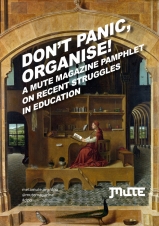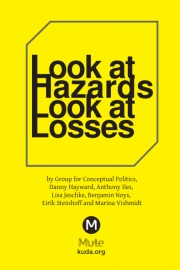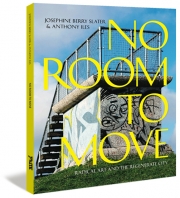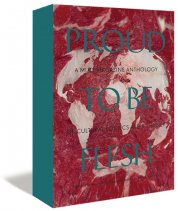Performance Art Online: The Marriages and Divorces of Kathryn Cornelius
Marriage and Divorce as Performance
Washington DC based performance artist Kathryn Cornelius completed her most recent piece, Save the Date, on August 11th, 2012. The work was performed at the Corcoran Gallery of Art as part of Take it to the Bridge, a series of pieces utilizing the glass Performance Bridge at the Corcoran. Cornelius’s stated intent was to explore “the life cycle of marriage and divorce and the wedding ceremony’s complex mix of private emotion, public spectacle, social expectation, and state power.”
The project, culminating in seven public weddings and divorces at the Corcoran, was launched through the creation of a Tumblr blog and a “Call for Proposals”. This common artworld term, used by institutions and organizations to solicit work from artists, was here used by Cornelius as a playful double entendre to request wedding proposals. The artist asked members of the general public to convince her–through a medium of their choosing–why she should marry them. From the pool of submissions, she was to choose six individuals to marry, and a seventh would be chosen from the remaining suitors by a public vote. The lucky seven would then marry and divorce Cornelius consecutively, each for one hour. The marriages and divorces were not legal ones, but when interviewed by the Washington Post the artist asked that audience members suspend their disbelief in this regard stating that “it’s as legal as it needs to be for the piece to be an art piece.”
Social Media Moving Performance Art into New Spaces
Cornelius relied heavily on social media throughout the project. In addition to the Tumblr blog, she created a wedding registry on the free honeymoon registry site Honeyfund. She used the site to generate donations by breaking down the expenses traditionally associated with a wedding. The list included everything from both nuptial and divorce services to ephemeral goods such as “something old” and “something new.” There were also items presumably meant to highlight the more absurd aspects of contemporary weddings such as a “spray-on tan” and “eyebrow & bikini wax.”
Cornelius also maintained a project-specific Twitter account on which she tweeted both with updates on the event and with (presumably) dramatized posts documenting her preparations for the big day. These again highlighted the absurdity inherent within wedding preparations such as weight-loss attempts and the use of hashtags like #Bridezilla.
The artist received a range of proposals, all posted on the project’s Tumblr blog. The majority of proposals were text-based, many including poetry. A few proposals utilized other media such as a song performed on Youtube.
A Personal Account
I have been aware of Kathryn Corenlius’s work for some time. She performed her piece Recognition at ArtDC, an international art fair at which I worked. She participated in a few projects with my former professor and art hero Jeffry Cudlin, and she attended the Communication, Culture, and Technology MA program at Georgetown University, a program to which I was accepted.
As an artist who works in video and occasionally considers similar themes, I was interested in Cornelius’s work. As a maturing young woman questioning the construct of marriage, this particular piece appealed to me. I had already been planning to move to Amsterdam shortly following the performance, and thought that participation in this project may be a fun release from the stress of an international move and an excuse to create a small video in the meantime. I created a short work and submitted it, my first wedding proposal, and awaited the results.
Click here to view the embedded video.
One day prior to the proposal submission closing, I received an email from the artist notifying myself and the other suitors of a change of plan. Rather than make her decision and have the public vote on who she should marry based on our proposals, Cornelius decided to add a new component. She wanted each suitor to answer a series of 10 personal questions and to submit a headshot, both of which she would then post on the project blog. She and the public would now be making their selections based on these “dating profiles” rather than on the proposals.
My heart sank. I had no problem being evaluated on the merits of my video, but I did not feel comfortable subjecting myself to public approval on the basis of my appearance or personal tastes. Had this aspect of the project been included from the outset, I would not have submitted a proposal, and I felt uncomfortable that the scope of my required participation was changed midway through the project.
After much consideration and communication with the artist, I made the decision not to submit my photo and answers, knowing that this would likely cost me the opportunity to participate in the piece. Cornelius made her selection of 6 suitors, and I indeed was not one of them. She then utilized the project’s Facebook event page to post a poll for public vote on the seventh suitor. I ended up in third place despite my conspicuously absent dating profile, and was satisfied with this result.
The artist continued to blog and tweet about the project including first dates with the suitors and engagement photos. The seven weddings were ultimately Livestreamed and I viewed one from my home in Baltimore.
On Participatory Performance
Despite not fully participating in this piece, I am happy to have engaged with it. It raised a number of interesting questions for me with regard to performance art using outside participants and performance art online. It caused me to consider issues of consent and the power dynamics between artists and their volunteers in these types of works. While Cornelius maintained ultimate authority, she would not have been able to realize her piece without willing suitors.
The project also provided food for thought on the use of social media by artists in tandem with their work. Cornelius’s additions of the dating profiles, first dates, etc. were clearly designed to self-promote and raise hype, thus blurring the boundaries between the work of art as a form of individual self expression and the complex institutional and commercial frameworks within which the work operates, and thereby affecting the perceived reality of her marriage ceremonies.
For further reading:
http://savethedatedc.tumblr.com/about
http://pinklineproject.com/article/my-marriage-kathryn-cornelius-personal-account
Sources:
http://www.kathryncornelius.com/
http://www.washingtonpost.com/entertainment/visual_arts/kathryn-corneliuss-save-the-date-looks-at-disposable-marriages/2012/08/02/gJQAVxsMSX_story.html
Mute Books Orders
For Mute Books distribution contact Anagram Books
contact@anagrambooks.com
For online purchases visit anagrambooks.com







